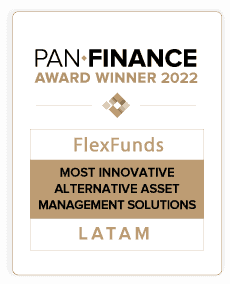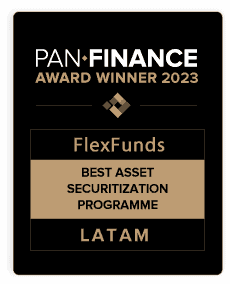- This is a general guide to understanding how to create a private equity fund and the advantages and characteristics of this investment vehicle.
- Ideal for fund managers, advisors, and finance enthusiasts seeking detailed insights into private equity funds.
- FlexFunds offers cost-efficient securitization of private equity funds, facilitating access to international investors and expanding distribution to private banking.
Creating a private equity fund can be a way to diversify investments and capitalize on market opportunities. However, it is also a complex process requiring careful planning and a deep understanding of financial markets.
What is a private equity fund?
A private equity fund is an entity that enables high-net-worth investors, both individuals and institutions, to invest in companies not publicly traded on stock exchanges.
These funds raise capital to invest in companies needing financing to expand, improve their finances, or undertake other projects.
Investing in a private equity fund involves rigorous analysis of a company’s fundamentals and a long-term partnership to achieve returns over time.
According to the Corporate Finance Institute (CFI), institutional and accredited investors are typically the primary sources of private equity funding, as they can provide substantial capital over extended periods.
Key roles in creating a private equity fund
To establish a private equity fund, it’s essential to understand the key roles involved in the investment vehicle.
The management team
First, consider the entire management team, encompassing professionals essential for operating a private equity fund, including experts in:
- Back office
- Data analysis
- Information technology
- Marketing
- Customer service
- Investor relations
- Among others
The managers
Next, account for the fund managers or portfolio managers. These specialists manage portfolios of various companies based on established objectives and potential risks.
“Like mutual fund managers, and unlike hedge funds, private equity fund managers acquire long-only interests in underlying companies (portfolio companies). Unlike their public-oriented counterparts, however, PE GPs typically hold each of their portfolio companies for several years,” notes Morgan Stanley.
The companies
An essential component of a private equity fund is the set of companies generating returns. These are usually young, technology-based firms with marketable products capable of effecting positive societal change.
The investors
Finally, there are the investors. The fund must determine its target investor type based on goals, wealth, conditions, etc.
Offering a fund focused on disruptive technology to very traditional investors differs significantly from offering a fund of conventional, stable businesses to highly risk-tolerant, innovative investors.
Advantages of private equity funds
The appeal of private equity funds lies in three key advantages:
Opportunity to invest in innovative businesses
They allow investment in innovative businesses often lacking market competition. All major companies today, including Microsoft and Apple, were once private.
Potential for high returns
Many private equity funds invest in highly disruptive businesses with high growth potential, often yielding substantial returns if the investment succeeds. A private equity fund can significantly outperform indices like the S&P 500, albeit with higher risk.
Enhanced diversification
These funds help improve or optimize portfolio diversification. Private companies are less liquid and exhibit lower volatility, and are less affected by macroeconomic factors impacting publicly traded companies.
Differences between a private equity fund and a venture capital fund
Private equity funds and venture capital funds are often considered the same investment vehicle but have fundamental differences.
Specifically, a venture capital fund is a type of private equity fund. Both invest in private companies not publicly traded.
However, venture capital funds typically focus on very young companies in early financing stages, whereas private equity funds may invest in more mature companies.
Venture capital funds seek explosive growth over a shorter time horizon, while private equity funds aim to engage with management teams to generate long-term value.
Consequently, venture capital funds usually hold minority stakes, whereas private equity funds often acquire majority or full ownership of companies.
How to create a private equity fund
If you’re interested in creating a private equity fund, consider these five essential steps:
1. Develop a business plan
Start with a business plan, the cornerstone of a successful private equity fund. The model should include detailed data on target companies and the investment strategy to be executed.
It should also outline company objectives, implementation methods, potential risks, and procedures to mitigate them as much as possible.
2. Address legal requirements
Given the complexity of financial structures, it’s necessary to meet all legal requirements before establishing a private equity fund, including creating a legally recognized company registered in the appropriate jurisdiction.
Compliance with all local and national regulations is essential for legal operation. Working with a finance-specialized attorney is advisable to ensure everything is in order.
3. Structure the fees
Private equity funds charge fees to investors to remain profitable. Structuring these fees will determine the fund’s long-term viability.
Typically, two types of fees are charged: an annual management fee and a performance fee. The former covers the fund’s operational costs, while the latter is based on the profits generated.
4. Assemble a competent team
The success of a private equity fund largely depends on its management team, as with other companies. Therefore, it’s crucial to have competent professionals with experience in finance and investment management.
The team should possess skills in evaluating and analyzing potential investment companies and be highly trained and motivated to maximize the investment vehicle’s profitability.
5. Seek clients
Once the private equity fund is established, attracting investors interested in allocating their capital is vital. Today, this can be achieved through various channels, such as personal networks, online advertising, and strategic partnerships.
A solid marketing approach to attract potential investors and retain existing ones is crucial. Otherwise, the client base may not suffice for the fund’s profitability.
How does asset securitization enhance the distribution of a private equity fund?
One of the main challenges of private equity funds is their low liquidity. Investing in non-publicly traded companies makes it difficult and/or costly to exit the investment at any time. However, asset securitization can address this issue.
Securitizing a private equity fund, a process facilitated by FlexFunds, allows the creation of an exchange-traded product (ETP) with its own ISIN/CUSIP code.
Through ETPs, investors can access the strategy with a simple purchase of securities via Euroclear using their existing brokerage accounts.
To learn more about our ETPs, feel free to request a meeting with the FlexFunds team to address all your questions.
Sources:
- https://www.morganstanley.com/im/en-us/individual-investor/insights/articles/introduction-to-private-equity-basics.html
- https://corporatefinanceinstitute.com/resources/wealth-management/private-equity-funds/







